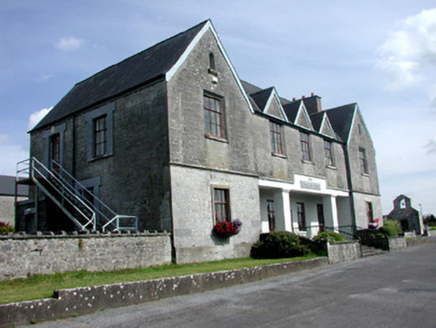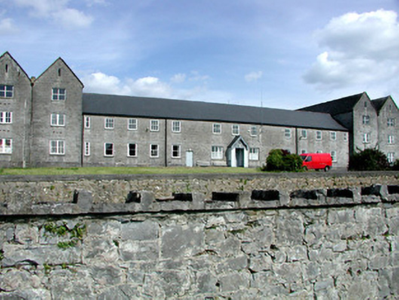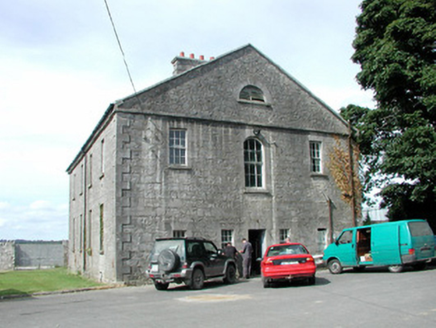Survey Data
Reg No
31817052
Rating
Regional
Categories of Special Interest
Architectural, Artistic, Historical, Social, Technical
Previous Name
Roscommon Union Workhouse
Original Use
Workhouse
In Use As
Nursing/convalescence home
Date
1840 - 1845
Coordinates
187892, 263663
Date Recorded
15/08/2003
Date Updated
--/--/--
Description
Former workhouse complex, built 1842, possibly to plan by George Wilkinson, now occupied by the Western Health Board. Comprising workhouse, fever hospital, workhouse master's house and ancillary buildings. Detached H-plan with thirteen-bay two-storey main block, with projecting two-bay three-storey double gable-fronted bays. Abutting T-plan building to rear, incorporating seven-bay chapel. Detached three-bay two-storey gable-fronted fever hospital to north east with attic and with pedimented façade. Detached five-bay two-storey workhouse master's house to west of workhouse with slightly-advanced gable-fronted end bays, arcaded central entrance bays with gablets over and with date plaque. Modern extension to south of workhouse. Detached eight-bay two-storey ancillary building to north-west of workhouse. Pitched slated roofs throughout with rendered, cut stone and red brick chimneystacks. Random coursed limestone walls with plinths and tooled quoins, raised to fever hospital and with string course to master's house. Timber sash and casement windows with stone sills and tooled stone surrounds with block-and-start surrounds to fever hospital. Some remaining stained glass windows remaining to chapel. Projecting gabled entrance porch to workhouse with carved bargeboards and with pointed-arched timber and glazed door. Recessed timber and glazed double doors to master's house, flanked by windows and with arcaded area to front. Famine memorial site to south of workhouse masters house comprising statue by Maurice Hanlon and Elizabeth McLoughlin with bellcote and grave marker. Complex partially bounded to by random coursed limestone wall with soldiered coping.
Appraisal
This former workhouse complex is testimony to the work of the Poor Law Unions in caring for the destitute of Ireland in the mid-nineteenth century. The survival of its planned form and much of its original fabric enhances the architectural significance of the complex. The famine memorial on the site represents the utter desperation of the people during that lamentable period of Irish history. County Roscommon was one of the worst afflicted counties in Ireland, suffering a 31.5% decrease to its population. Thousands flocked to the workhouse for sustenance and refuge. However the workhouses could not cope with the numbers requiring assistance. This situation is reflected in a notice which was posted up outside Roscommon Workhouse in January 1847, which stated that no new applicants seeking assistance could be admitted. Many who died here were buried in Bully's Acre, a short distance away.





